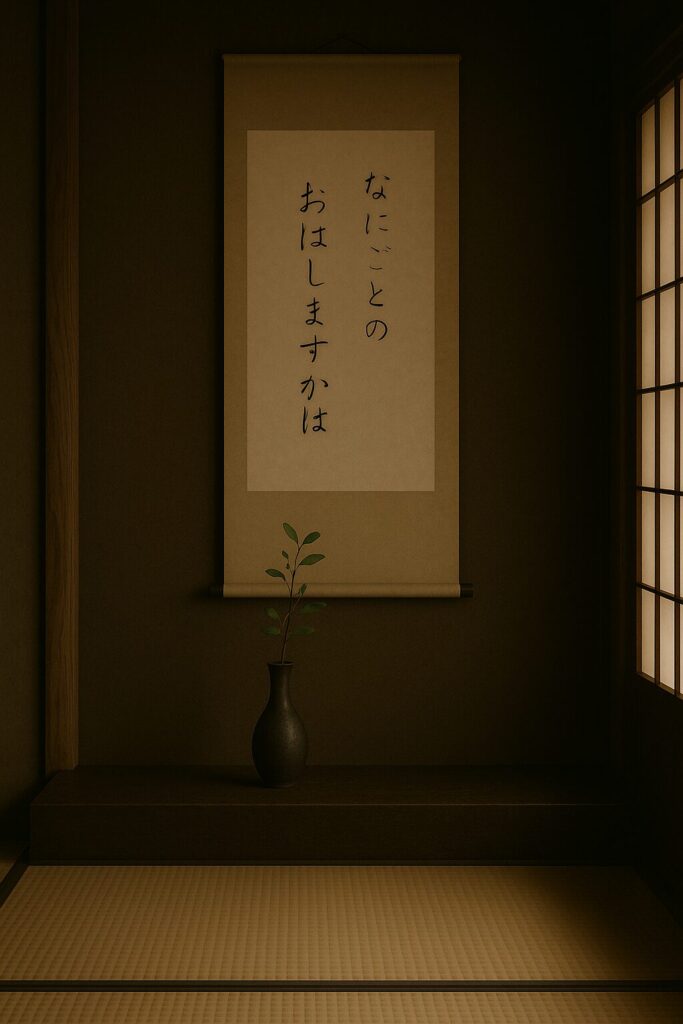By Kokoro Still
Kage—not merely shadow, but the quiet shape of presence—
is not what remains after the light has gone.
It is what appears where the light becomes still.
In Japanese aesthetics, kage is not absence.
It is form—quiet, withheld, and whole.
It does not follow the light.
It folds into it.
And in that folding,
Kokoro begins to breathe.
The Gesture of Soft Light
Light in Japanese spaces does not dominate the room.
It pauses.
Filtering through the shoji (translucent paper screens) and absorbed by wood,
the light does not seek to reach every corner.
In that pause, kage appears.
The tokonoma (an alcove for art or seasonal display) holds a hanging scroll.
A single flower stands in a thin vase.
A tea bowl—slightly turned.
They are not displayed.
They are received.
Kage is not where light fails—
it is where stillness takes form.
Memory in the Half-Light
I remember returning to my grandmother’s house.
The room unchanged.
The scent of sandalwood still in the air.
But it was not the things that stayed with me.
It was the way the light stopped just before the center of the room,
leaving the tatami in partial kage.
She was not there.
And yet the space was not empty.
It did not ask to be filled.
It asked to be honored.
And in that quiet,
I understood what it meant
to feel something that no longer arrives
but still remains.
Designed for the Unshown
A tea room leaves corners in kage.
A garden path bends before it reveals.
A verse in waka lingers unfinished.
This is not aesthetic restraint.
It is spiritual precision.
Kage is not concealment.
It is a way of allowing things to exist
without the violence of full exposure.
It lets form rest.
It lets meaning breathe.
And it trusts that what is unseen
still reaches us.
The Listening Form
There is a kind of presence
that does not arrive with sound or brightness—
but with weight,
with stillness,
with the slight shift in air
when we enter a room.
That presence is kage.
When someone is no longer with us,
we do not seek their image.
We recognize their place.
The hush that holds their memory.
The space that still leans in their direction.
Kage listens with us.
Not to explain,
but to remain.
Living with the Incomplete
To live with kage
is to let go of completion.
Kokoro does not speak all at once.
It drifts.
It hovers in folds of fabric,
in the scent left behind,
in the form that asks for nothing
but to be gently noticed.
What is partial is not lacking.
It is balanced.
Held open.
And within that openness,
we dwell alongside what chooses
not to appear.
Kage is not the trace of light.
It is the pause that lets light belong.
It does not vanish.
It stays.
Not as image,
but as shape.
Not as answer,
but as presence.
To live with kage
is to allow something real
to rest beside us—
unspeaking,
unfinished,
and whole.
feel free to share a quiet thought in the comments.
Or simply carry it into your day.
*The featured image was generated using ChatGPT.*
What did this moment bring to mind for you?
Leave a quiet note below — or simply carry it with you into your day.



コメント